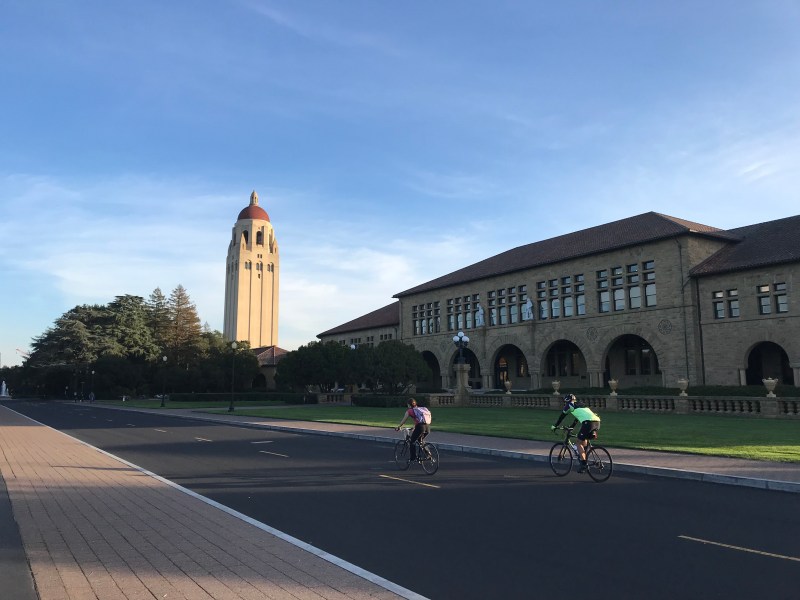Christian Sanchez is a first-year non-traditional transfer student majoring in English with a focus in Philosophy and Literature and incoming ASSU Executive VP. This opinion does not reflect that of the ASSU or any other institution with which he is affiliated.
I can only imagine the feeling of those who witnessed the blatant disregard for humanity when seeing the noose tied to the tree outside of Branner Hall on May 8, 2022. I am not surprised that someone would put their perceived superiority and elitism on display so brazenly. The dark history of lynching and the bigoted action of displaying a noose is synonymous with racial aggression toward those who are of African American descent — but an often overlooked part of that history is the lynching that targeted Mexican natives and Mexican Americans for eight decades. As a person who values my identity and as an agent of change, I would like to educate those who are unaware of the history that surrounds those lynchings, which took place in the southwest and in Santa Clara County.
People of Mexican origin and Mexican Americans entered a racial crisis after the Mexican-American War. After the annexation and occupation of the southwest by the United States, mob violence was a reality that plagued Mexicanos, even despite the Treaty of Guadalupe Hidalgo, which allowed Mexicans already living in the US-occupied southwest to remain landowners and gain civil rights. It is important that this history be acknowledged, especially in a time where discussions of racial injustice in the United States often center on Black and white identities. Mexican Americans were also hanged by white supremacist vigilante groups, primarily as retribution in absence of a formal justice system; these acts were never called into question because white culture did not care that Mexicans were hanged. White vigilante and outlaw justice were commonplace in the Wild West, and the justice system was still in its infancy, leading to the heinous and inhumane lynchings of Mexicans based on race and unfounded accusations.
Mexican Americans were victims of almost 600 lynchings between 1848 and 1928. These lynchings began in the California Gold Rush — about 170 lynchings happened from 1848 to 1860 — and ended a decade after the Mexican Revolution. By moving Mexicans out of gold mines in San Francisco, white vigilantes would scare off thousands of Mexican miners from their organized gold-hunting groups to steal their gold and resources. Eventually, this tactic led to unjust lynchings of Mexican and Mexican American people based on race and economic competition.
In Texas, where over 280 lynchings took place from 1848 to 1928, lynchings were justified by the sentiment that “Texas Country” was no place for Mexicans and that it was not a crime, morally, to kill a Mexican. As a result of being cut off from economic growth opportunities in the southwest, Mexicans began turning into bandits or “banditos,” most of whom were political revolutionaries acting against their economic exclusion. White Americans interpreted these “banditos” as lawless nuisances and killed them in response. In retaliation to the discrimination and violent attacks, Mexican natives and Mexican Americans drafted a call to action called the “Plan of San Diego,” which called for native Mexicans and Mexican Americans to kill all white males ages 16 and older. As a result of this plan, white Americans killed an undocumented number of Mexican natives and Mexican Americans.
Ultimately, over the final two decades of this violent outbreak, several civil rights groups fought for the abolition of mob violence targeting Mexicans and Mexican Americans. Although there were many breakthroughs for their African American compatriots, the larger American population was still not sold on the citizenship of Mexicans.
Despite increased awareness of the issue of lynching during the civil rights movement, there was still little awareness of the lynchings of Mexican natives and Mexican Americans.
The hanging of Tiburcio Vásquez is tied closely to the history of Santa Clara. In white America, he was considered a bandito during the height of Mexican resistance to white American lynchings of Mexicans and Mexican Americans. Vásquez was tried and convicted of murder and theft, and although he maintained his innocence, he was hanged outside of the courthouse on North First Street in San Jose on March 19, 1875. The courthouse still stands in the same location.
Being a Chicano at Stanford means a lot to me. I am the first in my family to go to a university, and I am the first in my family to pursue a graduate degree. I am trying to be the example I want my children to follow — not of going to college, but of resilience and motivation to pursue one’s dreams and passions. Knowing this history and knowing that I will continuously be fighting an uphill battle as a non-traditional transfer student has lent me the impetus to further my academic and extracurricular pursuits here at Stanford. Although this history of lynching of Mexicans is not always at the forefront of my conscience, it still pains me to know that the history is close to where I am attending school — it is subconsciously embedded into the overarching narrative of my existence here.
